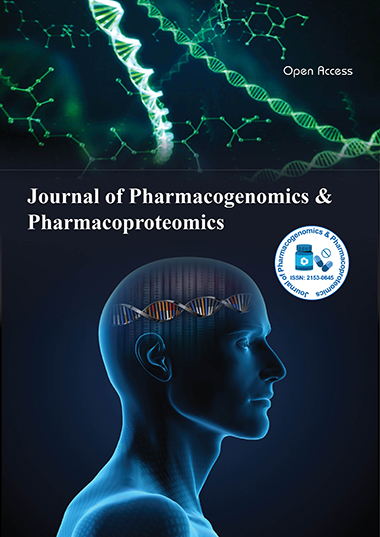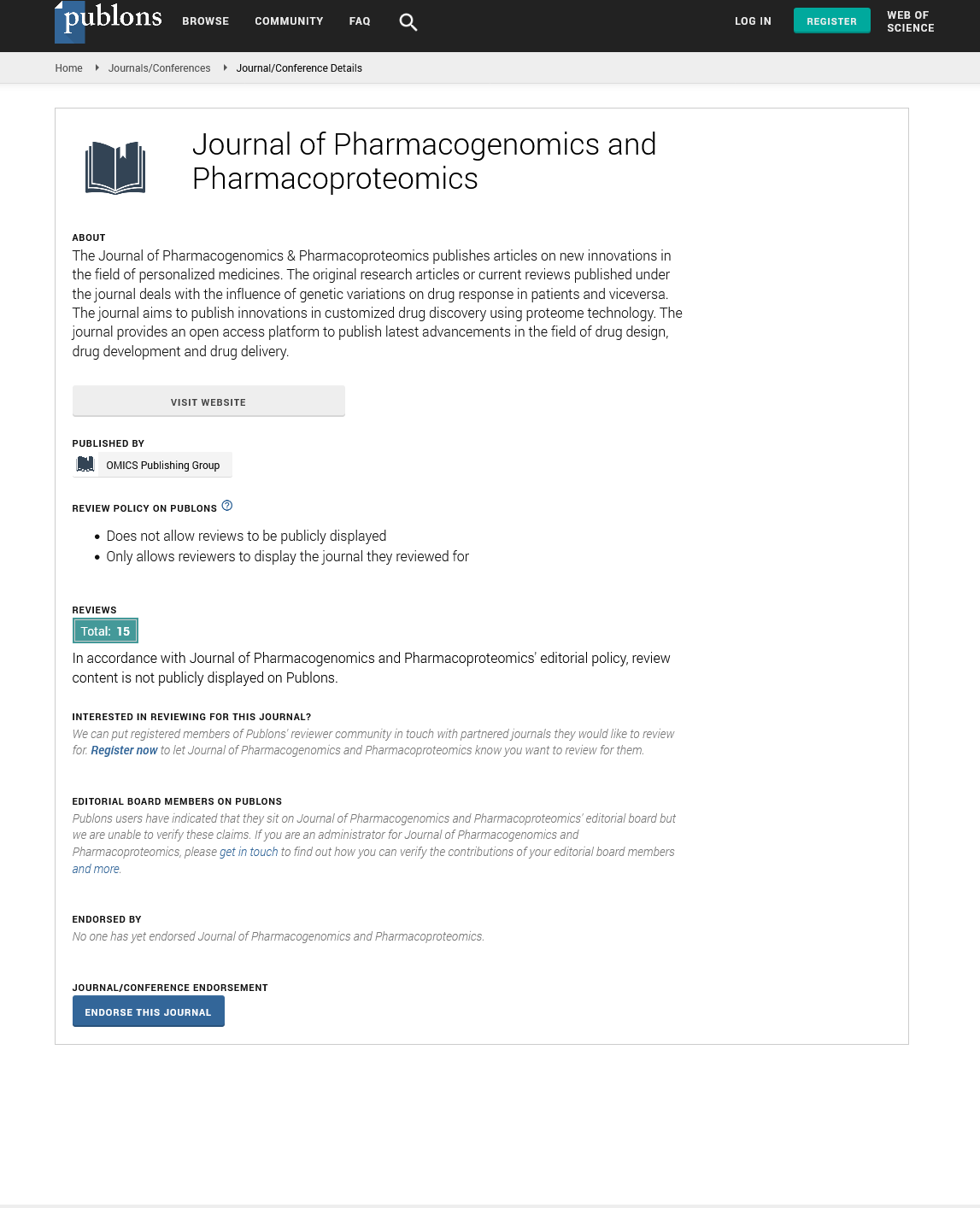Indexed In
- Open J Gate
- Genamics JournalSeek
- Academic Keys
- JournalTOCs
- ResearchBible
- Electronic Journals Library
- RefSeek
- Hamdard University
- EBSCO A-Z
- OCLC- WorldCat
- Proquest Summons
- SWB online catalog
- Virtual Library of Biology (vifabio)
- Publons
- MIAR
- Euro Pub
- Google Scholar
Useful Links
Share This Page
Journal Flyer

Open Access Journals
- Agri and Aquaculture
- Biochemistry
- Bioinformatics & Systems Biology
- Business & Management
- Chemistry
- Clinical Sciences
- Engineering
- Food & Nutrition
- General Science
- Genetics & Molecular Biology
- Immunology & Microbiology
- Medical Sciences
- Neuroscience & Psychology
- Nursing & Health Care
- Pharmaceutical Sciences
Opinion - (2024) Volume 15, Issue 2
Development of Orphan Translational Medicines for Pediatric Neurological Conditions
Helan Shua*Received: 01-May-2024, Manuscript No. JPP-24-26031; Editor assigned: 03-May-2024, Pre QC No. JPP-24-26031 (PQ); Reviewed: 17-May-2024, QC No. JPP-24-26031; Revised: 24-May-2024, Manuscript No. JPP-24-26031 (R); Published: 31-May-2024, DOI: 10.35248/2153-0645.24.15.100
Description
Rare pediatric neurological diseases are a significant challenge in medicine due to their complexity and the limited patient population available for clinical trials. The development of orphan medicines, which are drugs and biologics intended for the treatment of rare diseases, is important for providing effective treatments for these conditions. Animal models play a pivotal role in the preclinical stages of drug development, especially for rare pediatric neurological diseases. Their translational value—the extent to which findings in animal models can predict human outcomes is a subject of great interest and importance.
Orphan medicines are designated for diseases that affect a small fraction of the population, typically fewer than 200,000 individuals in the United States. Pediatric neurological diseases such as Spinal Muscular Atrophy (SMA), Duchenne Muscular Dystrophy (DMD), and various forms of pediatric epilepsy fall into this category. These diseases often have severe, life-limiting consequences and currently lack effective treatments. Animal models are indispensable in the drug development process, particularly for understanding disease mechanisms, evaluating potential therapies, and assessing safety profiles. In the context of rare pediatric neurological diseases, these models are crucial because of disease mechanism understanding animal models help elucidate the pathophysiological mechanisms underlying these diseases. For instance, mouse models of SMA have been instrumental in understanding the role of the SMN1 gene and its protein product in motor neuron survival.
Therapeutic evaluation they allow for the testing of potential therapeutic interventions in a controlled environment. Gene therapy, small molecules, and antisense oligonucleotides have been evaluated in animal models before advancing to human trials. Safety and toxicity assessments animal studies are critical for initial assessments of safety and toxicity, helping to identify potential adverse effects and determine safe dosage ranges. The translational value of animal models depends on their ability to accurately replicate human disease conditions and predict human responses to treatments. Several factors influence this translational potential. The closer the genetic and pathophysiological similarity between the animal model and the human disease, the higher the likelihood of successful translation. Transgenic and knockout mice have been extensively used to mimic human genetic mutations seen in pediatric neurological diseases.
The extent to which the animal model replicates the clinical features of the human disease is crucial. For example, animal models of DMD exhibit muscle weakness and degeneration similar to that observed in affected children. The ability of the animal model to predict the efficacy of therapeutic interventions in humans. For instance, the success of nusinersen, an antisense oligonucleotide for SMA, was preceded by promising results in animal models. While animal models provide valuable insights, they also present challenges and limitations.
Species differences are physiological and metabolic differences between species can affect drug metabolism and response, leading to discrepancies between animal and human studies. Rare pediatric neurological diseases often involve complex, multifactorial pathologies that are difficult to fully replicate in animal models. The use of animals in research raises ethical concerns, necessitating the development of more refined and humane experimental approaches. Recent advancements aim to enhance the translational value of animal models and explore alternative approaches. These models incorporate human genes or tissues to better mimic human disease processes. For instance, humanized mouse models of neurodegenerative diseases have been developed to improve the relevance of preclinical findings.
Advanced imaging and biomarkers are utilizing advanced imaging techniques and identifying biomarkers that can be tracked in both animal models and human patients can improve the translational accuracy of preclinical studies. The development of organoids and computer-based models offers complementary approaches to traditional animal models. Organoids, derived from human stem cells, can replicate aspects of human tissue architecture and function, providing a more accurate platform for drug testing. The translational value of animal models in the development of orphan medicines for rare pediatric neurological diseases is significant. Despite the challenges and limitations, these models remain a focus of preclinical research, providing essential insights into disease mechanisms, therapeutic potential, and safety profiles.
Advancements in humanized models, imaging techniques, and alternative approaches continue to enhance their relevance and predictive accuracy. By breducing the distance between bench and bedside, animal models contribute to the development of effective treatments that can significantly improve the lives of children suffering from these distressing conditions.
Citation: Shua H (2024) Development of Orphan Translational Medicines for Pediatric Neurological Conditions. J Pharmacogenom Pharmacoproteomics. 15:100.
Copyright: © 2024 Shua H. This is an open-access article distributed under the terms of the Creative Commons Attribution License, which permits unrestricted use, distribution, and reproduction in any medium, provided the original author and source are credited.

